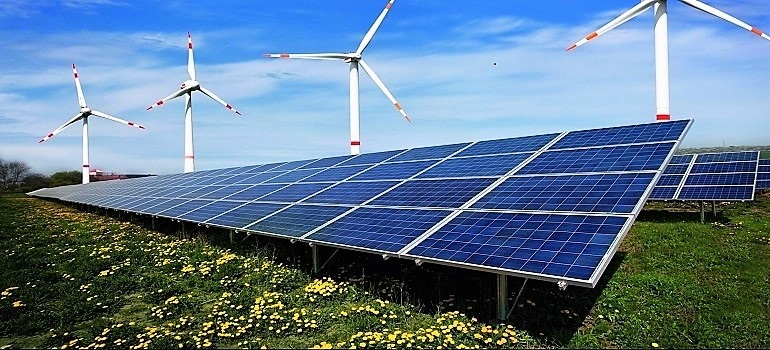
Solar Energy Corporation of India (SECI) completed a 1,000 MW wind project auction last week. Tariffs fell to a new low of INR 2.64 (US¢ 4)/ kWh. Winning bidders include ReNew (INR 2.64, 250 MW), Orange Power (INR 2.64, 200 MW), INOX Wind (INR 2.65, 250 MW), Sembcorp Green Infra (INR 2.65, 250 MW) and Adani (INR 2.65, 50 MW).
This auction comes 7 months after the first wind auction in India when tariffs were observed to be around INR 3.46 (US¢ 5.3)/kWh, implying a price reduction of 24% in a relatively short time.
Parity in prices means that there is likely to be further alignment between wind and solar power procurement policies and regulations;
The main reason for the reduced tariffs is simply increased competition;
Rapid reduction in tariffs makes wind power more attractive but also increases dissonance risk for DISCOMs who have agreed to previously pay much higher feed-in-tariffs;
Developers will sign 25-year, fixed price PPAs with SECI, which will in turn sell power to DISCOMs in Uttar Pradesh, Bihar, Jharkhand, Assam and Goa. The developers are free to locate projects anywhere in India and connect to the more reliable inter-state transmission network.
Fall in tariffs makes wind power competitive with solar power (last auction tariff of INR 2.64/ kWh in Gujarat last month) and significantly cheaper than other greenfield sources including thermal, hydro and nuclear. It helps in boosting growth prospects of wind power, which has been struggling vis-à-vis solar power. Wind capacity addition in FY2017-18 is expected to slow down to a mere 1,000 MW or even less in comparison to 5,300 MW of capacity addition in FY2016-17. Price parity also means that there is likely to be further alignment between wind and solar sectors in procurement policies and regulations.
With inter-state transmission charges waived until December 2019, resource rich states in western and southern India can continue to build more capacity to supply power to inland states in north, east and north-east (mainly Punjab, Haryana, Uttar Pradesh, Bihar and West Bengal). Hopefully, cheaper power will pave way for more demand from these states as they continue to lag behind in power supply as well as RPO compliance.
The latest auction was an intensely fought affair going into early hours of next morning. The inevitable question is what explains the 24% tariff fall in just seven months? Wind turbine prices have declined about 8-10% because of the slowdown; debt cost has also come down slightly by about 0.50% in this period but that together accounts for only about 7% tariff reduction. Another relevant but subjective factor is change in offtaker from PTC India, a power trading company (partly owned by the Government of India) to SECI, which enjoys better credit rating. But the main reason is simply increased competition. After the end of feed in tariff regime, states have been slow in coming out with new tenders. This slowdown is forcing developers to be more aggressive to win capacity and meet commitments made to their investors.
We believe that the new wind tariffs are too aggressive. As we stated in a recent blog, fall in tariffs makes renewable power more attractive for consumers but is creating risks for investors and lenders. It also further increases dissonance risk for DISCOMs, which had previously agreed to pay much higher feed-in-tariffs
